7 Effective & Calming Sensory Strategies for Kids with ADHD
Each child operates on his or her own sensory baseline, and some children with ADHD may be more acutely sensitive to particular sights, sounds and textures. This increased sensitivity can create difficulties in staying focused or finding a sense of peace in various settings. This article explores 7 creative Sensory strategies for kids with ADHD to manage sensory input. These strategies are designed to promote a feeling of comfort, improve concentration, and enable individuals to move through their environment more effectively.
What Is Sensory Integration?
Our senses constantly provide our brains with information (sight, touch, sound, smell, taste, movement). Sensory integration involves the way the brain deals with, structures, and understands this input.
Children with Attention Deficit Hyperactivity Disorder might struggle with sensory processing at times, a sign that there could be brain processing issues around specific sensory input, leading to feelings of overwhelmed, distracted or even agitated.
This is what sensory processing can look like in children who have ADHD with sensory issues:
- Oversensitivity: Sharp sounds, intense glare, or certain surfaces can be very overwhelming.
- Under-sensitivity: A child may not display a response to pain, fluctuations in temperature, or heavy pressure.
- Sensory seeking: Activities such as rocking, tapping, or chewing could be efforts to control sensory experiences.
The sensory difficulties lead to problems for children with ADHD in concentrating, regulating their emotions and calming down.
How Sensory Integration Help Kids with ADHD?
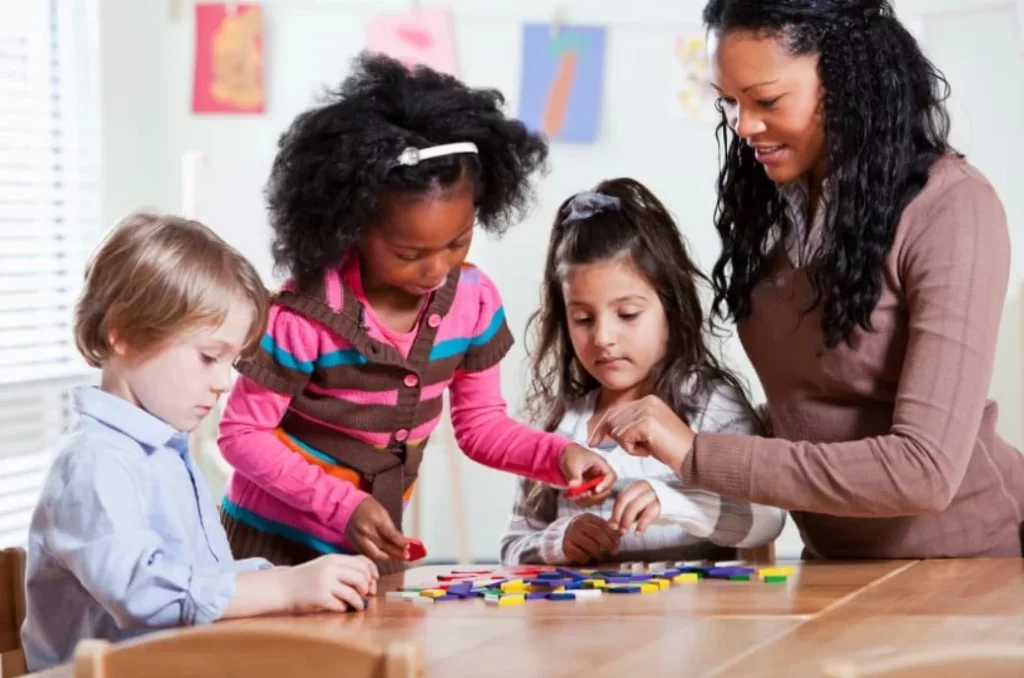
The sensory strategies for ADHD help children to calm down through various sensory strategies and when they are in an over stimulation state, these could be the best calming sensory activities for ADHD and could be part of their daily routine, or therapy activities for ADHD child.
By engaging in these Sensory strategies for kids with ADHD, Children can:
- Improve self-regulation:Enhance self-control by mastering how to handle their reactions to excessive sensory stimulation.
- Improve concentration and attention: Minimize interruptions and boost capacity to focus on activities.
- Promote emotional well-being:Experience reduced feelings of frustration and being overwhelmed, resulting in a more peaceful and optimistic emotional condition.
Soothing sensory tasks can be intentionally added to kids’ daily schedules, whether that be at home with a parent or caretaker or during the school day. This approach offers an opportunity to make the school environment (or home) sensory-friendly by having kids with ADHD feel more comfortable and encouraged, thus enhancing their emotional and behavioural regulation in dealing with sensory encounters.
How Sensory Systems Appear in Children with ADHD?
Children with ADHD also can experience the environment and the world with over- or under-responsive senses – with sensory systems that are hypersensitive or hyposensitive to sensory stimuli.
This can make it difficult to cope with daily doses of sensory input, frustration that might result in a behaviour that mirrors the very core features of ADHD: hyperactivity, inattention and impulsivity.
Symptoms of sensory processing problems in individuals with ADHD may include:
- Auditory: Have an aversion to loud sounds, find it difficult to concentrate in loud settings.
- Visual: Disturbed by intense lights, struggle to focus due to visual mess.
- Tactile: Refrain from wearing specific textures in clothes, have a dislike for physical contact.
- Vestibular: Look for motion or experience dizziness readily.
- Proprioception: Trouble determining body’s location in relation to surroundings, awkward actions.
These sensory difficulties may appear as excessive activity, lack of focus, and sudden actions, resembling primary signs of ADHD. It is essential to tackle these fundamental problems with sensory regulation strategies in order to effectively manage ADHD.
7 Effective Sensory Strategies for Kids with ADHD
Discovering techniques that cater to the sensory needs of children with ADHD can greatly impact their capability to concentrate and succeed. From basic activities to specific tools, these sensory soothing techniques provide parents and caregivers with practical ways to establish a calming and supportive environment tailored to their child’s individual requirements.
1. Movement Breaks

Adding short movement breaks for physical activity in a child’s daily schedule can offer essential support for their sensory system. Exercises such as jumping jacks, wall push-ups, or a brief dance session can provide deep pressure therapy and assist in controlling their sensory input.
As one of the top Sensory strategies for kids with ADHD, these breaks enable children who have ADHD to let out built-up energy, resulting in enhanced focus and concentration later on.
Promoting frequent movement breaks can be a highly effective sensory calming techniques for students with ADHD, providing a natural way to meet their sensory needs and enhance involvement in activities.
2. Fidget Toys
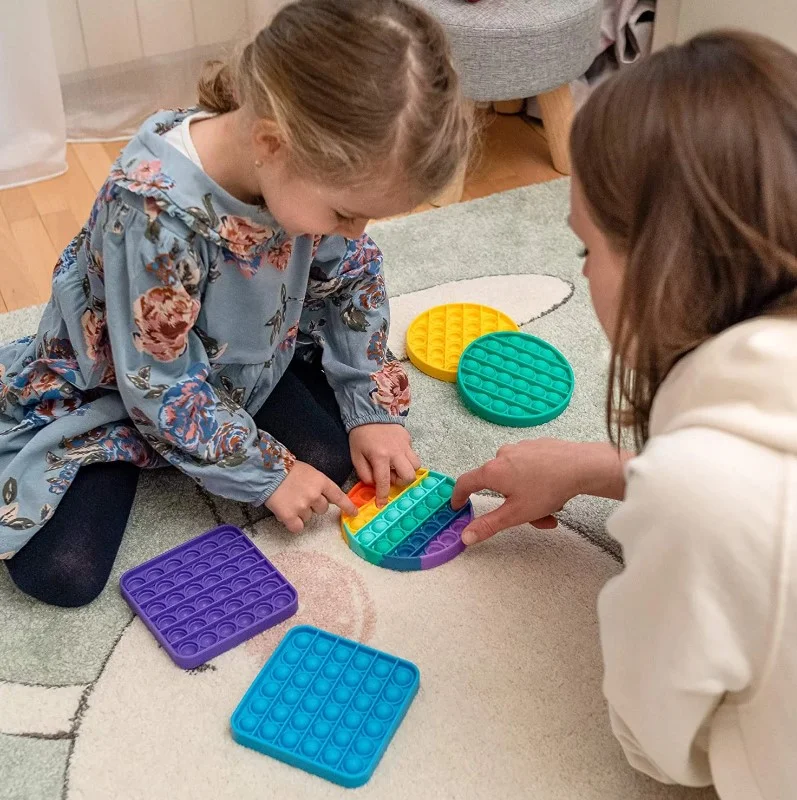
Fidget toys can be extremely useful tools for children with ADHD in handling sensory input and staying focused.
These compact devices offer physical sensation, meeting the sensory system’s need for motion without creating disturbance.
Fidget toys, such as stress balls and spinner rings, provide a subtle way for kids to release pent-up energy by redirecting their impulses effectively.
Adding fidget toys to their environment can greatly improve their focus and participation in activities, making them crucial sensory activities for kids with ADHD and ASD.
3. Chewy Toys [Chewy Jewelry]
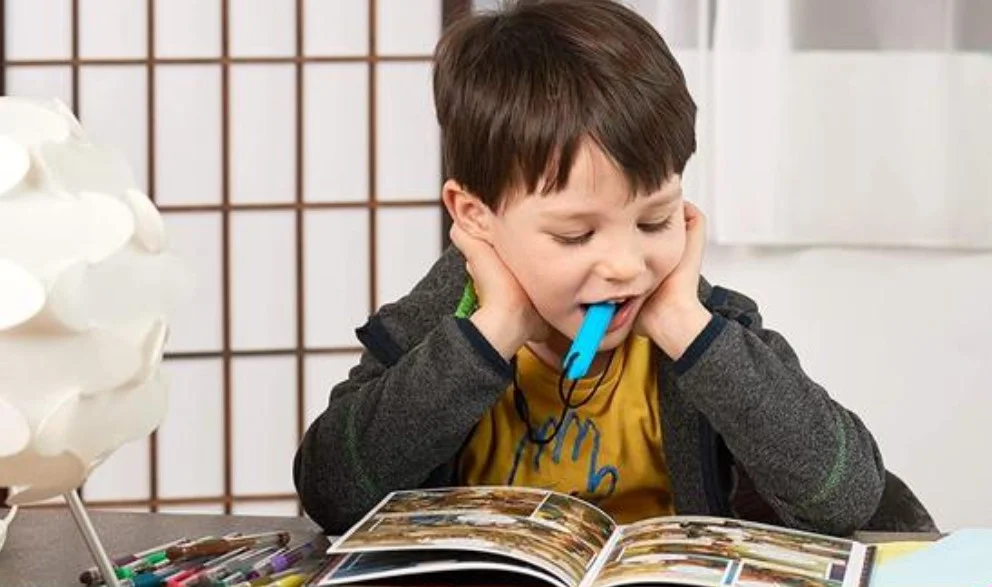
Chewy toys, such as chewable jewellery, have a dual purpose for ADHD children. They provide oral stimulation for sensory input, as well as a place for fidgety impulses to go without the added embarrassment of a wiggle.
With a chewy toy, the child is able to regulate his or her sensory system, quieting a heightened sense of anxiety or agitation as a result.
These tools are especially helpful in times of increased stress or when concentration is needed, which makes them essential sensory processing disorder calming techniques for students with ADHD.
Including chewy items in a child’s collection of tools can assist in effectively addressing their sensory requirements while also fostering feelings of ease and protection.
4. Active Seating
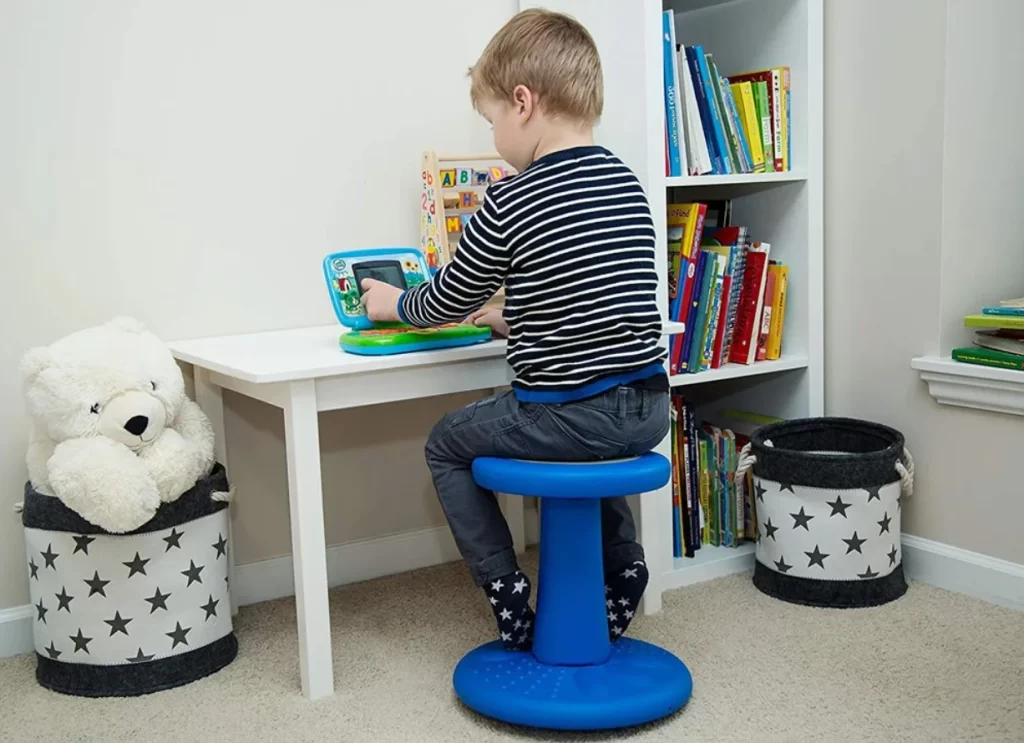
Seating options like stability balls or wobble cushions provide a novel way to help support the sensory system of children who have ADHD.
By offering gentle, continuous motion, these chairs offer deep pressure therapy and sensorimotor feedback, aiding in children’s concentration and involvement.
Active seating, one of frequently used Sensory strategies for kids with ADHD, promotes dynamic postures that increase blood flow and oxygen to the brain, leading to enhanced cognitive function.
Adding active seating to classrooms or study areas can help improve attention and focus in students with ADHD by seamlessly incorporating sensory activities into their daily routines.
5. Sensory Activities
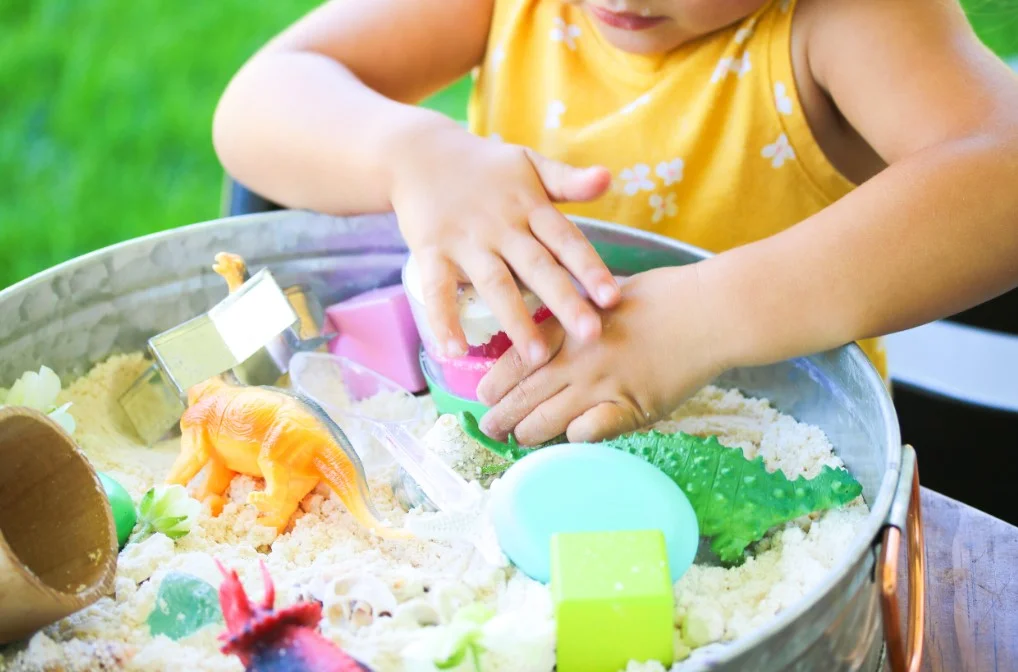
Students with ADHD and ASD benefit greatly from sensory activities that engage the senses specifically in ways that they need, such as having the opportunity to explore and self-regulate with tactile materials, through sensory bins and messy play with different textures like playdough, clay, sand, skritches and wet/dry items.
Incorporating sensory activities in their daily schedule can help kids feel their needs fulfilled by satisfying their sensory input and refine their stress management and relaxation strategies.
Parents and educators can help children thrive in different environments by providing a variety of sensory experiences to develop coping skills.
These activities play a crucial role in supporting the distinct needs of students with ADHD as Strategies for Students with ADHD.
6. Visual Supports [Schedules and Timers]
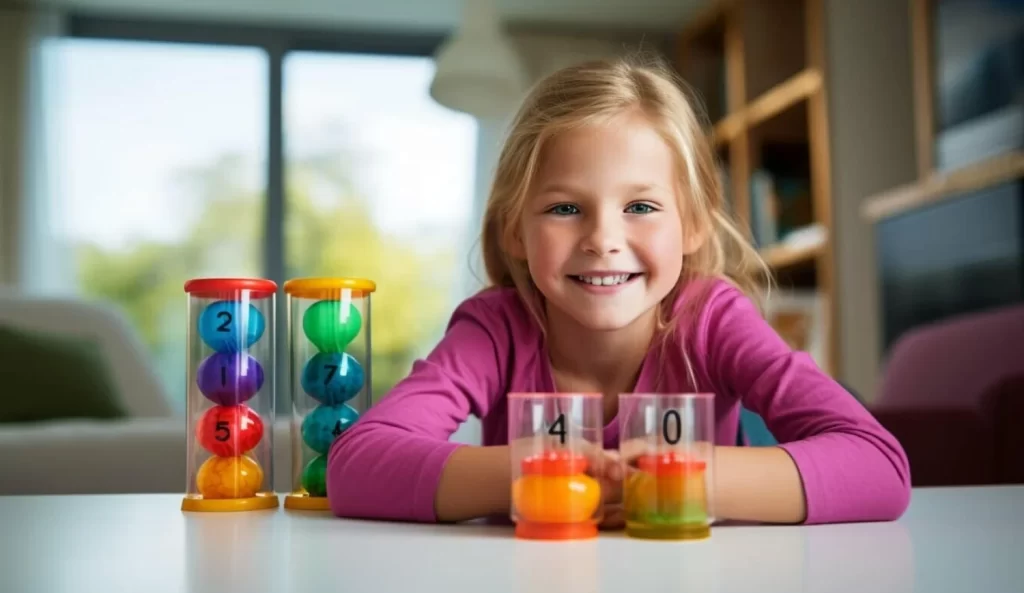
Visual supports, like calendars and alarms, are essential for assisting kids with ADHD in effectively organizing their time and responsibilities. These tools use clear, visual cues to provide structure and predictability, thereby decreasing anxiety and improving organization skills.
Visual schedules divide tasks into smaller parts, while timers assist children in effectively managing their time, making them effective sensory strategies for kids with ADHD.
Adding these calming sensory techniques to daily schedules can enhance transitions and decrease meltdowns, fostering a more supportive setting for students with ADHD.
Visual aids play a crucial role in fostering independence and success in academic and daily responsibilities.
7. Quiet Space

Creating a quiet zone, a crucial sensory strategies for kids with ADHD designed to help children who have ADHD find respite from sensory overload.
Once they can take a time out in a space that disengages from distractions, the child will feel ready to move back into the hustle and bustle of their environment. In this quiet space, children need every possible distraction eliminated.
A quiet space should contain peaceful visual stimuli (low lighting, soft lighting and warm colours are all helpful), as well as containing sensory soothers such as blankets, pillows, weighted blankets, soft soothing music or even bubble wrap to squeeze.
This can be one of the most critical sensory strategies for healthy kids with ADHD.
Tips to Manage Sensory Overload in ADHD Kids with Sensory Strategies
The experience of sensory overload in ADHD can be overpowering for children and their parents. Calming sensory strategies provide a valuable resource during these difficult times. Understanding and utilizing appropriate sensory seeking behavior interventions can be crucial in managing sensory overload.
Below are some tips to assist your child in handling sensory overload related to ADHD:
- Establish a setting that is conducive to sensory needs: Set up calm areas in the house, lower the brightness of the lights, minimize any loud sounds, and offer various comfortable seating choices.
- Utilize sensory aids such as stress balls, fidget spinners, or weighted blankets to offer tactile sensation and encourage calmness in situations with increased sensory demands.
- Create a set schedule: Having a consistent daily schedule can alleviate stress and offer a feeling of reliability for kids with ADHD dealing with sensory overload.
- Promote physical activity: Engage in regular movement such as yoga, dancing, or playing outdoors, which can offer specific advantages.
- Encourage them to practice deep breathing to calm their nervous system by taking slow, deep breaths.
Once they learn and integrate these Calming sensory techniques, children with ADHD will enhance their self-regulatory skills, and can begin to naturally self-regulate their sensory experiences and move through their environment more easily. This can then help coping many of the challenges of sensory processing disorder that children with ADHD often struggle with.
Sensory Overload in ADHD
Life can be difficult for a person with ADHD, and sometimes children with ADHD can have a detrimental reaction to sensory input within their immediate environment (the inability to successfully and comfortably process sensation) known as sensory overload.
Common Sensory Overload Triggers:
- Auditory: Loud noises like traffic, crowded spaces, or strong music can be highly stimulating.
- Visual: Bright lights, fluorescent lighting, or excessive visual clutter can cause overstimulation.
- Olfactory: Strong smells from perfumes, cleaning products, or certain foods can trigger aversion.
- Tactile: Rough fabrics, clothing tags, or messy foods can feel unpleasant.
The better you can get a handle on what sensory overload triggers are at play here, the better you will be able to mitigate them, in order to provide your child with the most sensory-friendly environment and sensory strategies possible.
Sensory Calming Checklist for Children
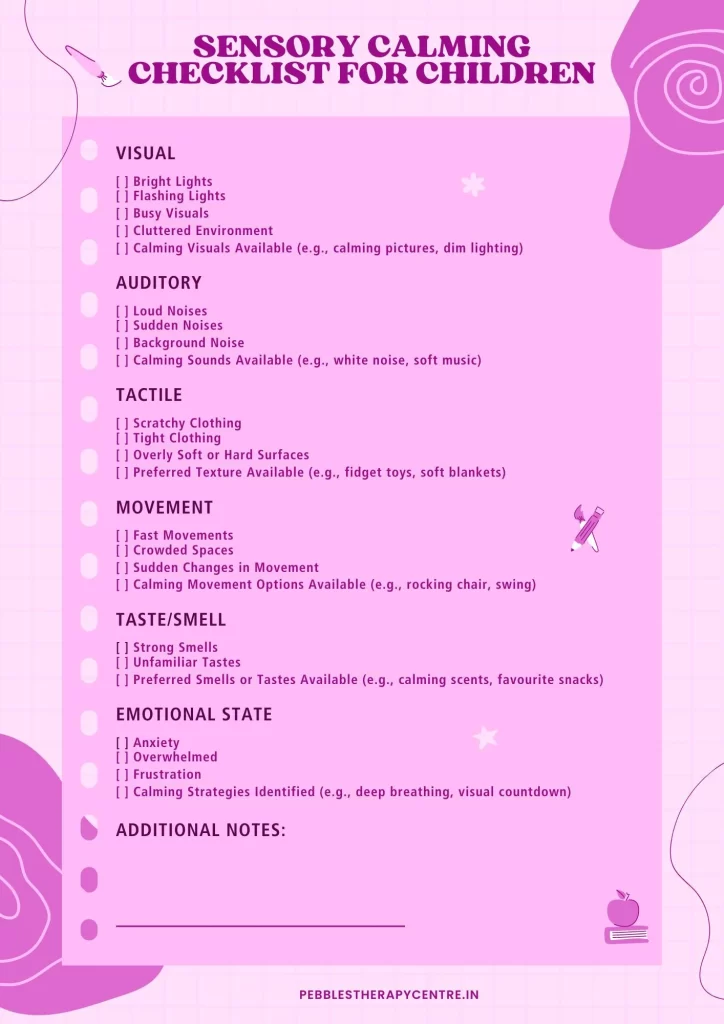
Our checklist acts as a tool for parents and caregivers to recognize and use calming techniques for sensory overload in a successful manner. Every item on this checklist aims to create a peaceful and regulated atmosphere for children with ADHD by including sensory-friendly features, maintaining regular routines, and offering sensory tools.
By adhering to this checklist, families can establish a supportive structure that meets their child’s sensory needs and promotes optimal functioning. Utilizing a organized sensory calming checklist could make a significant difference in aiding children with ADHD in managing their sensory encounters with assurance and strength.
By creating a customized sensory diet that includes these sensory strategies for ADHD, you give children the ability to control their own regulation. Don’t forget, seeking guidance from an occupational therapist can offer a personalized plan of advice for your child’s individual requirements.
FAQs
Children with ADHD might experience heightened or reduced sensitivity to sensory input, resulting in challenges with information processing and potential overwhelm.
The sense of seeing, hearing, touching, tasting, smelling and moving can all be affected through problems regulating the sensory stimulation.
Indeed, integrating breaks for movement, using fidget toys, and creating calm spaces can greatly enhance concentration and decrease stress.
If sensory processing issues greatly affect your child’s daily life, hinder participation in activities, or cause distress, it is recommended to seek help from a professional. Intervening early can effectively tackle these challenges.
Completely. Occupational therapists are able to evaluate sensory requirements and suggest particular techniques to incorporate into a child’s treatment regime.

